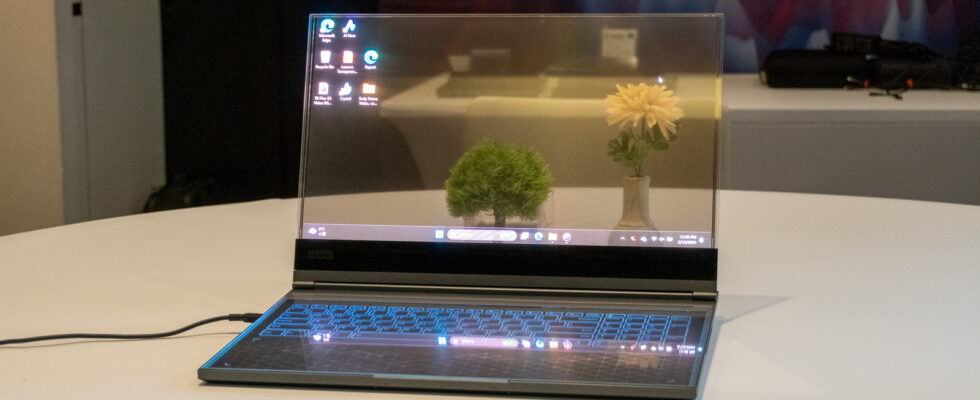At MWC 2024, Lenovo presents a completely revolutionary ThinkBook concept. Transparent displays first appeared at CES in January, when LG and Samsung unveiled TVs using the technology.
Lenovo put it into a laptop, making it one of the coolest I’ve ever seen (even surpassing Lenovo’s ThinkPad X1 Fold) and one of the first laptops to feature a screen of this caliber.
I spent some time with this concept a few weeks before MWC, and let me tell you, my jaw dropped a few times.
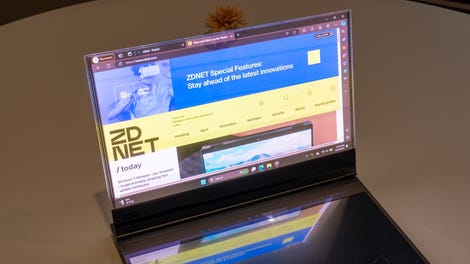
Max Buondonno/ZDNET
A piece of transparent glass with Windows icons floating on it
The 17.3-inch Micro-LED display looks like a piece of transparent glass with Windows icons floating in it.
Moving the cursor feels like it’s in the air, and interacting with apps is reminiscent of what you’d see if you were using an Apple Vision Pro. Lenovo claims that the screen can reach a brightness of 1,000 nits and we can definitely say that it is one of the brightest laptop screens on the market.
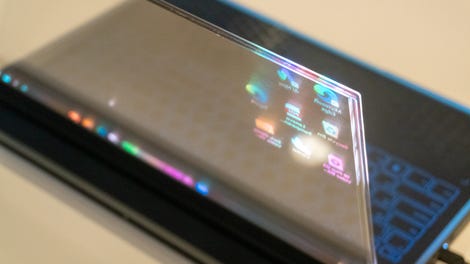
Max Buondonno/ZDNET
I went to the other side of the table to look at the screen from the back. Well we see the screen at around 55% of the brightness of the front panel. Lenovo claims to be working on software to black out the background of the screen, but in my demo, you could see through it. I guess that means you won’t be working on secret documents with this screen anytime soon!
Lenovo wants transparent screen to go beyond aesthetics
Lenovo showed me some examples of running a web browser, playing videos, and interacting with the Windows interface, all of which were very nice to look at. But Lenovo wants the transparent display to go beyond just being aesthetically pleasing – it wants to make it functional, and one of the ideas it has floated is to use a camera and artificial intelligence.
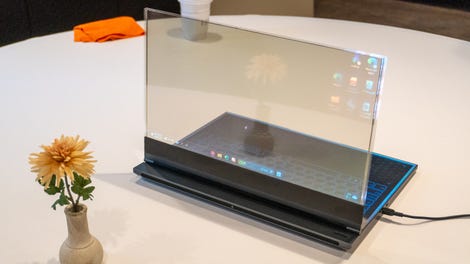
Max Buondonno/ZDNET
On the back of the ThinkBook, under the display hinge, is an outward-facing camera. Lenovo claims that the laptop could be used to identify objects behind the screen and display information about them using object identification and generative AI.
The software behind this feature would be powerful enough to identify the edges of the object and display the generated information next to it on the screen. The company gave the example of a flower placed behind the screen and whose name appears shortly after.
Object identification via AI
Unfortunately, this feature wasn’t available to demo, but it’s another hint that Lenovo wants to push the idea of AI-powered PCs even further in 2024 and beyond. This transparent laptop could become a reality one day, and object identification could prove to be a useful feature. But until it’s delivered to customers, we don’t know if it’s worth buying.
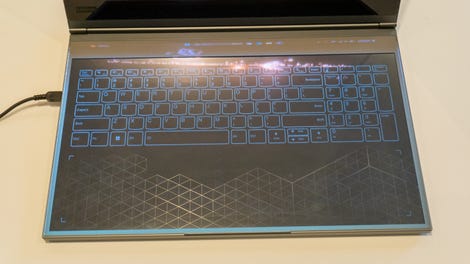
Max Buondonno/ZDNET
The rest of the laptop is just as crazy. Lenovo has included a second touchscreen at the bottom that displays a capacitive keyboard and trackpad and can transform into a real Wacom-style drawing surface.
The laptop is bulky and heavy and has decent specifications like a 13th generation Intel processor and a large amount of RAM. The screen, while obviously sleek, is low resolution (Full HD) and lightly colored objects exhibit haloing.
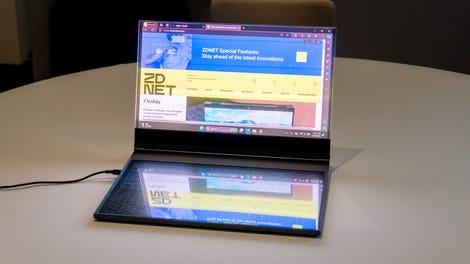
Max Buondonno/ZDNET
This particular ThinkBook won’t be released anytime soon
Overall, this is easily one of the most interesting laptop concepts I’ve seen in the last five years.
Lenovo has built a laptop that I’ve only ever seen on sci-fi shows, and yet it seems practical and useful at the same time.
It’s obvious that this particular ThinkBook won’t be released anytime soon, and Lenovo couldn’t give me an answer on when a transparent laptop will ship. But the very fact that they’re thinking about it is a sign that they’re considering a future product with this technology, and I’m here for it.
Source: “ZDNet.com”
